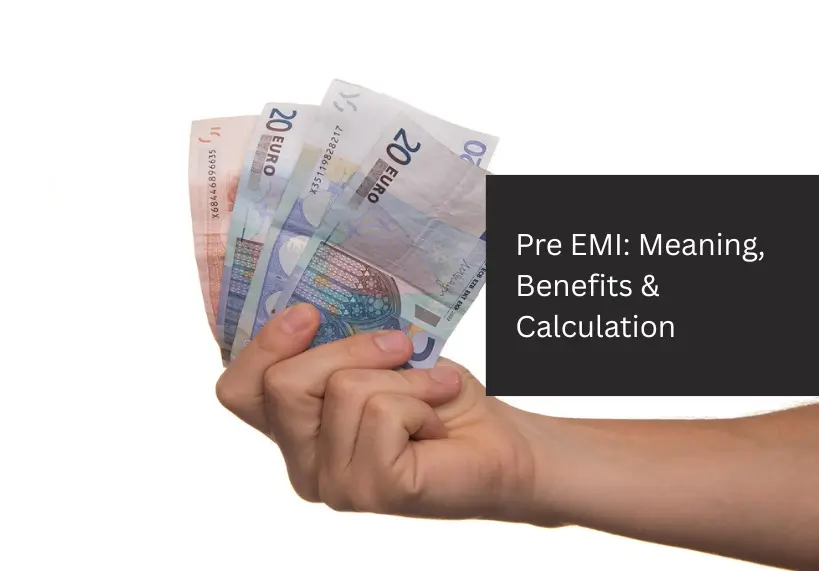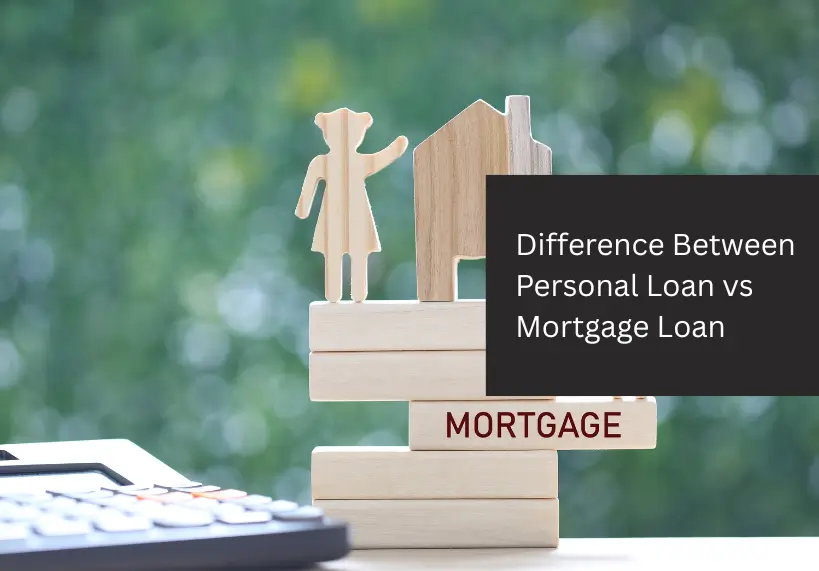
Buying your dream home is exciting, but if it’s still under construction, paying full EMIs right away can feel heavy.
That’s where Pre-EMI comes in as a smart option that lets you pay only the interest on your loan until the property is ready. It helps you manage your finances better, especially if you’re also paying rent or handling other expenses.
In this blog, we’ll explain what Pre-EMI means, its key benefits, how it works, and when it’s the right choice for you.
What is Pre EMI?
Pre-EMI refers to the interest you pay on the disbursed portion of your home loan before the full loan amount is released.
Think of it as paying a smaller monthly amount until your property is ready for possession. Your interest rate determines how much Pre-EMI you pay every month the higher the interest rate, the higher your Pre-EMI (interest-only) monthly payment.
For example, if your loan is ₹50 lakh but only ₹20 lakh has been disbursed to the builder, you’ll pay interest only on ₹20 lakh. Once construction is complete and the entire loan is disbursed, your regular EMI (principal + interest) begins.
Benefits of Pre-EMI
Here are some key benefits of opting for a Pre-EMI plan:
1. Lower initial payments:
You pay only the interest portion, so your monthly outflow is lighter during the construction phase.
2. Easier on your budget:
If you’re also paying rent or other expenses, Pre-EMI helps you manage both without financial strain.
3. Ideal for under-construction properties:
Since the loan is disbursed in stages, Pre-EMI ensures you don’t pay full EMIs for money you haven’t fully received.
4. Flexibility:
It gives you breathing space until you start earning more or move into your new home.
5. Helps maintain cash flow:
By reducing EMI pressure during the initial years, you can focus on other investments or savings.
How Pre-EMI Works
Pre-EMI is a payment method where you pay only the interest on the portion of your loan that has been disbursed, instead of paying the full EMI right away.
This continues until the entire loan amount is released by the lender. During this phase, your monthly payments remain lower, helping you manage your cash flow better.
Once the full loan is disbursed, your regular EMIs which include both principal and interest begin. It’s a convenient way to ease financial pressure during the initial period of your loan.
How to calculate Pre EMI?
Calculating Pre-EMI is quite simple.
The formula is:
Pre-EMI = Loan Amount Disbursed × Annual Interest Rate / (12 × 100)
Example:
Let’s say your bank disbursed ₹20 lakhs at an interest rate of 9% per annum.
Pre-EMI = 20,00,000 × 9 / (12 × 100) = ₹15,000 per month (approx.)
This means you’ll pay around ₹15,000 monthly as interest until the next instalment of your loan is released or until construction is completed.
Most lenders also show this estimate in your loan schedule or EMI calculator.
When Should You Choose Pre-EMI?
If you can afford full EMI early, doing so will usually reduce total interest. You should consider choosing Pre-EMI if your property is still under construction and you don’t want to bear the full EMI burden right away.
It’s especially helpful if you’re already paying rent or managing other financial commitments. With Pre-EMI, you only pay the interest on the disbursed amount, keeping your monthly outflow lighter.
This option is ideal for buyers who expect the construction to take some time or want to manage cash flow efficiently until the home is ready.
Once you get possession, you can start paying full EMIs that include both principal and interest.
Conclusion
Pre-EMI is a smart way to manage your finances during the construction phase, helping you stay in control without stretching your budget. It lightens your monthly payments and gives you more breathing room to plan your expenses wisely.
And if you ever need quick funds for home renovation, medical needs, travel, or any personal expense, LoanTap’s personal loan offers flexible EMIs, minimal paperwork, and instant approval so you get the money you need, right when you need it.
FAQ
1. Is Pre-EMI a good choice for everyone?
It depends. Pre-EMI is ideal if you’re managing rent and other expenses. But if you can afford full EMIs, it’s better to start early to save on interest.
2. What is the difference between Pre-EMI and Full EMI?
Pre-EMI means paying only the interest on the disbursed loan amount, while Full EMI includes both principal and interest. Full EMIs start once the entire loan is disbursed, usually after possession.
3. Does Pre-EMI increase the total loan cost?
Yes, it can. Since you pay only interest for a while, your principal stays the same, leading to higher overall interest if construction takes longer.
4. Can I switch from Pre-EMI to Full EMI before construction is complete?
Yes. Most lenders allow you to start full EMIs anytime. Doing so can help reduce your overall interest and loan tenure.
5. What happens after the property is ready?
Once construction is complete and the full loan is disbursed, your Pre-EMI phase ends, and you start paying regular EMIs with both principal and interest.








